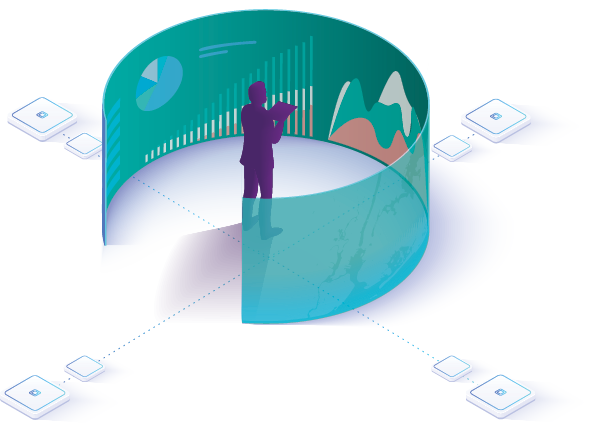Six signs that your e-commerce system is truly scalable.
Direct selling is an industry known for not staying put.
Our model is conducive to exponential growth, with many companies regularly posting substantial year-over-year revenue increases. On the most recent Direct Selling News Global 100 list, 17 companies reported growing by $100 million or more from 2019 to 2020.
Growth is good. It’s better—and more sustainable—when intention underlies the expansion. This is where the concept of scalability comes in. Making sure your organization has a sound but flexible infrastructure and design that can support growth is the best way to keep it from buckling under the pressure of becoming larger.
In our “E-commerce Excellence” story earlier this year, we touched on the basic elements of scalable technology, in particular. We told you that it’s fluid and integrated, it works well for one-on-one and one-on-thousands applications, and it translates easily across international borders. This month, we elaborate on the idea of scalability, giving you six signs that your e-commerce system is suited for every next level.
Sign #1
Your sales and marketing team communicates with your tech team.

One of the biggest mistakes direct selling companies make is not having enough cross-sectional input when they’re developing their e-commerce system. The IT department has to understand the business needs and plans of the sales and marketing team so that it can recommend or develop a system that supports those needs. Likewise, the business team won’t get far with a strategy that requires certain tech capabilities if it hasn’t consulted with the IT folks to make sure it’s possible.
As author Brett Blake writes in his book “Systems Scale: Eight Simple Systems that Ignite Growth,” if you view your organization as an ecosystem—a web of interdependent parts—you will be more likely to move beyond traditional thinking about your technology. It’s not just a collection of computer codes. It’s a dynamic system that can grow and improve as long as it has all the information it needs.
Sign #2
Your technology systems communicate with each other.
Just as sales and IT have to communicate to develop an effective e-commerce system, the systems themselves have to easily share information. If you launch a mobile app that distributes samples and then 15 percent-off coupons, but your back-office system doesn’t have the capacity to collect the right data from customers during the transaction, you’ll have no idea how well the app is working. You won’t know things like your close ratio or what offers work best with what demographics.
Pay attention to the API (application programming interface) of the system you’re investing in. This is the software that allows applications to talk to each other. The more seamless the data sharing, the more valuable analysis you’ll get from your system, which makes the system more cost-effective.
Cost-effectiveness is key as you scale your business, according to consultant Peter Cohan. “Scalable is a word that gets thrown around in business conversations,” he writes in Inc. magazine. “But what does it mean? For me, it means … as your business grows, its costs will go down so much that it will change from a burner to a producer of cash.”
Sign #3
Your system is built to expand.
As your organization grows, you will want to collect data from an increasing number of customers and increasing amounts of data per customer.
For example, you might start out asking shoppers to fill out a form every time they purchase a product, but eventually, you’ll want them to create customer profiles. And maybe those profiles will expand over time to include more data about their product and lifestyle preferences. Your data collection system needs to be malleable enough to accommodate more fields for customers to fill out, and it needs to be able to store and make accessible all of that information for whoever in the company needs it.
You can get caught with your heads down trying to meet quarterly goals and forget to look up and out to the future. Try to anticipate what your business needs will be before you need them, and develop an e-commerce system that will grow with you.
Sign #4
Your system is robust and globally accessible.
Don’t forget about the technology nuts and bolts. Your e-commerce system needs enough processing power so that your online catalogs load quickly, for example. It needs the ability to make millions of concurrent connections so that it can handle a surge in orders. It needs to be accessible in international markets, too, complying with the unique commerce and data privacy laws in various countries.
Sign #5
Your compensation system supports your e-commerce strategy.
Good direct selling ideas die in places where they’re not supported by the compensation plan. If your compensation plan rewards distributors primarily for recruiting other distributors, that’s the activity you’ll get from your sales teams. They might not be as inclined to use the sampling and coupon features on the app you spent so much time and money developing.
Sign #6
Your e-commerce partners are scalable, too.
Choose manufacturing and fulfillment partners with the production, warehousing and logistical capacity to accommodate your projected growth.
Speaking of partners, consider working with a third party to develop and maintain your e-commerce system. You might have some internal capacity and even talent to develop one, but most direct selling companies are better off working with a provider whose job it is to do nothing but keep its clients’ IT systems cutting edge.
The Human Element
Technology has gotten quite smart. It’s easy to think it will manage itself, responding and expanding in exactly the ways we need it to, without a lot of thought or planning from us. But it’s only as good as the thoughts we put into it and the attention we pay to whether it’s actually meeting our needs.
Yes, technology is a powerful tool, but it still requires human beings to put their heads together and decide when, where and how to plug it in.
From the July 2021 issue of Direct Selling News magazine.


